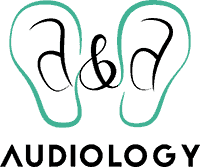- The Connection Between Hearing Loss and Dementia - July 30, 2024
- The Advantages of Rechargeable Hearing Aids - July 16, 2024
- How to Enjoy Music Festivals While Protecting Your Hearing - July 3, 2024
Remember the hearing aids your parents or grandparents used to wear. They were large, unsightly, and prone to buzzing and squealing. The hearing aids of the past were mostly analog and were hard to fully control. Today, the majority of hearing aids are becoming digital. Not only can you now expect superior sound quality, but the level of control of range of tones and pitches makes for a truly personalized experience. Today’s digital hearing aids come with a whole new slew of options and features which you can customize for your specific lifestyle needs including machine learning to adjust automatically to different environmental situations, speech amplification in noise, disruptive background noise suppression and feedback suppression, tinnitus masking, Bluetooth connectivity and so much more!
Smaller and Stylish!
Hearing aids continue to get smaller and smaller as they utilize breakthroughs in micro processing. In fact, in many instances breakthroughs in the miniaturization of computer technology occurred specifically to address the needs of hearing aid users who continue to demand more discrete and lightweight hearing aids. Not only are Modern hearing aids more powerful than ever before, but they are lightweight and come in state-of-the-art designs which allow you to select a pair which fit your personal style.
Analog Versus Digital
Analog hearing aids work similarly and have all the same components of digital models except for one key difference. To understand it you have to understand that when sound is created it creates vibrations which build pressure in the air. These sounds are waves which resemble ocean waves with a clear peak and ebb and flow. The higher the pitch the steeper the wave. Analog hearing aids deliver a full wave to your ears through the amplification process. While this may seem ideal, in truth it caused a lot of feedback and unclear amplification in the past. Where digital amplification differs is that it segments the wave into tiny steps. Each step can be amplified clearly, ensuring a clear sound every time.
The Components of Digital Hearing Aids
The thing is that digital hearing aids are much like the hearing aids of the past except that their amplification process is slightly different. Otherwise they have the same basic components including: A microphone, a processor, a loudspeaker and power source. The microphone picks up sounds, or acoustic signals, and sends them to the processor. The processor amplifies the sounds and converts them into electrical signals. The loudspeaker, also known as the receiver, transmits the signals to the ear canal. The sound is released there and can once again be clearly perceived by the wearer. Meanwhile the battery, whether rechargeable or a replaceable battery powers the whole device making them very portable.
The Benefits of Going Digital
While analog hearing aids amplify every sound, digital technology gives us a chance to program our hearing aids more selectively. This is helpful for us as audiologists who can create a listening program which amplifies the sounds you need to hear based on your latest hearing exam. Not only that, but there are several benefits to going digital including:
Background reduction: background noise can be a big distraction when attempting to listen with hearing loss. Digital hearing aids can filter out the background noise and amplify the sounds that you actually want and need to hear for clear communication and to stay alert in noisy crowded settings.
Reduces feedback: Analog hearing aids were notorious for creating feedback. It was not only uncomfortable but distracting and often one of the biggest reasons that people got frustrated and gave up on hearing aids. Today’s digital hearing aids minimize feedback by
detecting its own output, and selectively filtering out feedback.
Automatically adjusts the volume to the environment: Different environments make different demands for your hearing aids. Some digital hearing aids today can even change programs based on your location and listening requirements by using GPS and machine learning.
Directional microphones: hearing in noisy environments can present one of the most common hurdles for hearing aid users, especially when trying to follow a conversation. Directional microphones are becoming increasingly more common in hearing aids which point forward. This makes it so you can hear the person standing in front of you more easily. All you have to do is face a speaker in a crowd to make it easier to follow what they are saying with digital amplification.
Digital hearing aids are amazing! To find out more, schedule a hearing exam with us today!

